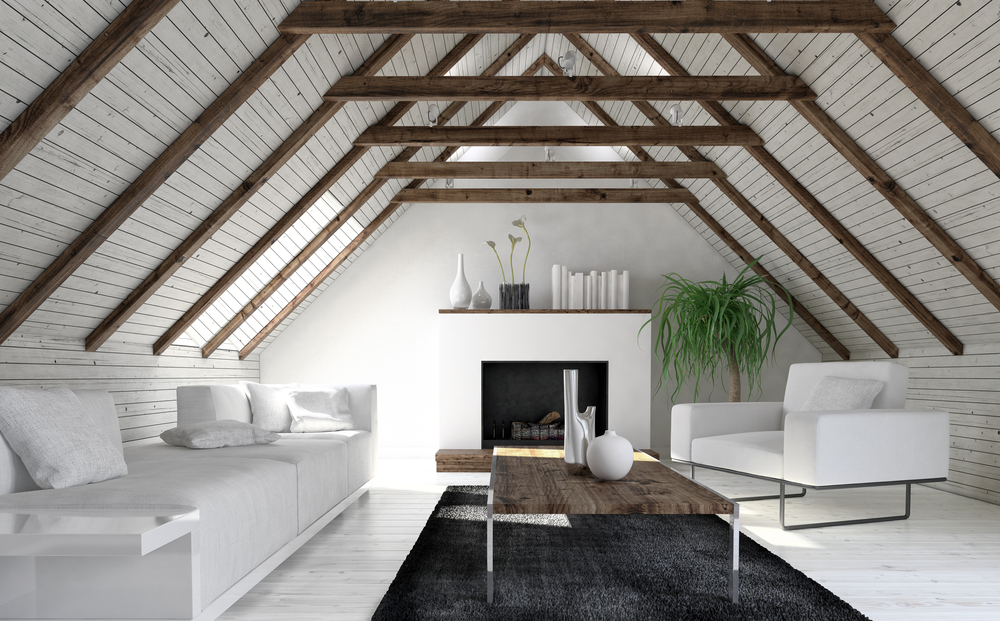|
September Newsletter - How much would you spend on your 'forever home'?
In this month's edition, we start off with a look at how much people are prepared to spend when it comes to buying the home of their dreams.
We also offer a brief guide to your Help to Buy options, there's a guide on what to consider when converting your loft and finally, reports are pointing to a rise in property prices in August that outstrips increases seen over the last three months.
How much would you be prepared to spend for your 'forever home'?

Everybody has their own notion of a forever home, whether that is a sprawling mansion, a chic downtown loft or a quaint cottage in the country. However, what would you be willing to pay for that dream residence?
Research conducted by the Nottingham Building Society has shown that homebuyers expect to be purchasing their forever home, that is the property that they will live in for the rest of their lives, when they are around 41 years old. This is despite the statistics showing that the average age of those who have already purchased their final property being 36, displaying a certain level of pessimism amongst those surveyed.
Ben Osgood, senior mortgage manager at The Nottingham, said: “You would naturally assume people always want more so it’s really refreshing to see so many people realising they already live in their forever home.
“A homebuyer’s ‘wish list’ is often created when purchasing their first house but more often than not there’s a degree of compromise required when people are first getting on to the ladder.
“As you travel up the property ladder, taking the next step gets more and more expensive so we’re seeing an increasing number of people asking about additional borrowing so they can remodel and extend to turn their current home into somewhere they have no reason to move from.”
When it comes to that elusive forever home, one of the most important factors is the location of the property with 50% of people who were surveyed by The Nottingham placing this as their key factor. As well as location being central in the search for a forever home, the size of the property (16%), price (13%) and the appearance (8%) all ranked highly amongst those surveyed.
Help to Buy - how does it work and what are your options?

If you’re a first-time buyer looking to purchase a property, then you’ll almost certainly be aware of the Help to Buy scheme and its success in helping people get onto the property ladder. What you may not be aware of is how the scheme works, and how it helps buyers to secure deposits for homes that would otherwise be out of their reach.
With that in mind, we’ve put together a rough guide to how Help to Buy works.
Can you get a sufficient deposit together?
Most standard mortgages require a deposit of at least 5% of the value of the home you want to purchase. If you are able to get the capital required, then you may not need to apply for any scheme.
Equity Loans
If your deposit doesn’t stretch that far, however, never fear! This is where Help to Buy comes in. If you have a 5% deposit, you can apply for an equity loan for purchasing new-build properties. The Government will lend you up to 20% of the property’s price, but you’ll have to start paying interest on that loan after five years.
For example, should you purchase a £200,000 house, you’d pay £10,000 (5%), get a mortgage for £150,000 (75%) and the Government would loan you the remaining £40,000 (20%).
ISAs
If you’re still saving for that all-important deposit, then a Help to Buy ISA is available to you, with the Government adding 25% on top of the value of your savings, with up to 2.6% interest tax-free. A word of caution; if you’re considering this option, then you would need to apply for your ISA prior to 30th November this year. Click here to learn more.
Shared Ownership
If you can’t stretch your finances to be able to afford the entirety of a mortgage, Shared Ownership provides you with the opportunity to buy a share of your home (between 25% and 75% of the property’s value) whilst paying rent on the remaining share. You can also buy bigger shares in the property once you’re able to, offering you flexibility for the future whilst owning a significant stake in the home you wanted.
Purchasing a home doesn’t have to be beyond any first-time buyer. Speak to our financial experts about your Help to Buy options and find out how you can finally buy the property of your dreams.
Loft conversions - factors to consider for your space

For some of us, a great option to increase the floorspace in our homes is to move upwards into the loft area. However, if you’re considering converting your attic space into living space, there are a few factors that you should consider before starting any work…
Is it worth it?
When you are weighing up the potential of a loft conversion, it’s worth deliberating whether the cost of the work is equal to the value which you are adding to your property, so that you don’t end up overspending with no hope of recouping the costs when you decide to sell up. A loft conversion can add up to 20% to the value of a property, a significant amount; however, the cost of completing the works can vary depending on the type of space that you have available and the complexity of the requisite works. Shop around for your building quotes so that you have multiple options and then compare property prices in your area that have had loft conversions to see the difference in price; this should give you a strong idea in terms of budgeting.
Is my loft suitable for conversion?
Not all lofts can be converted into bona fide living space, as there are some caveats in terms of the available head height in the area, the pitch of the roof, the structure of the roof and obstacles such as water tanks or chimneys which may obstruct the area. When you measure from the bottom of the ridge timber to the top of the ceiling joist, you need to have at least 2.2m of usable space for a conversion to be suitable.
Do I need planning permission?
Depending on the type of conversion that you are implementing, you may not need any planning permissions whatsoever. As of 30th May this year, “Permitted Development” rules grant rights to enable homeowners to undertake some types of building work without the need for any permissions. If you are completing a simple conversion, with no structural changes to the roof, then you will most likely not require planning permission, making the process a lot simpler. To read about “Permitted Development”, see government guidelines here: https://www.gov.uk/guidance/when-is-permission-required
How do I intend on using the space?
One of the most important questions to ask yourself before you commit to the building work is what exactly you need the extra space for. In some instances, this will be an easy question to answer; for example, if you’re a growing family in need of an extra bedroom. However, for others the use of the room may not be so clear-cut. If you’re adding the extra space simply because you’re feeling a little squeezed for space in your property, then a loft conversion may well be the wrong answer as, although you’ll be increasing your living area, you will most certainly be losing useful storage metres. If you are looking for more space, then consider moving into a more appropriate property in your area – you may well have made a profit on your current property which would enable you to upsize.
Don’t fall foul of your insurer
Before completing any works on your property, ensure that your insurer has been fully briefed with regards to the possible changes to your property as you don’t want to invalidate your home insurance. Adding value to your property may affect your premiums, and any building work being completed (such as floors being taken up or electrics changed) can result in damage to the property which may not be subject to insurance claims.
House prices rise at fastest rate for three months

Mortgage lender Nationwide has indicated that house prices in August rose at the fastest annual pace in three months, with prices rising 0.6% year-on-year. This upturn in pace is contributing to the widespread sentiment that the housing market is beginning to perform particularly strongly once more.
Supporting the figures from Nationwide, reallymoving.com have published their August monthly House Price Forecast which predicts continuing growth in prices across the United Kingdom.
According to the report: “Average values are set to rise by 1.5% over the next three months (August to October 2019), continuing their steady climb. Particularly strong growth in August will see prices increase by 3.2%, and whilst they’ll then dip by 1.4% in September, they will be up 3.1% annually – the largest annual increase since November 2018.”
CEO of reallymoving.com Rob Houghton has this to say on the current status of the property market;
“The outlook for the property market over the next three months is remarkably positive, considering the current political and economic context. The recent election of a new Prime Minister who is committed to leaving the EU on Halloween even if a deal isn’t reached could mean clouds are gathering on the horizon, but any impact on prices in the short term is likely to be mitigated by the urgency of home movers to complete deals in the next three months.”
<< News
|
|